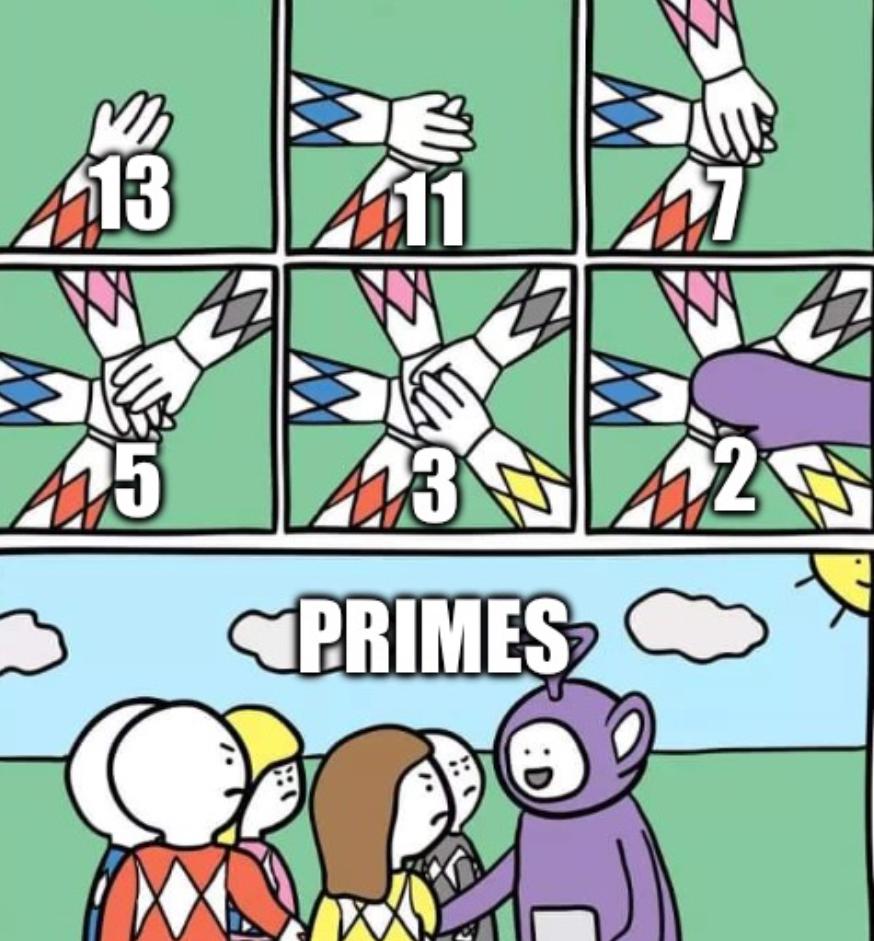this post was submitted on 09 Aug 2023
666 points (95.1% liked)
Memes
45271 readers
2451 users here now
Rules:
- Be civil and nice.
- Try not to excessively repost, as a rule of thumb, wait at least 2 months to do it if you have to.
founded 5 years ago
MODERATORS
you are viewing a single comment's thread
view the rest of the comments
view the rest of the comments

It is no new number, though you can add infinitely many ones to the prime factorisation if you want to. In general we don't append 1 to the prime factorisation because it is trivial.
In commutative Algebra, a unitary commutative ring can have multiple units (in the multiplicative group of the reals only 1 is a unit, x*1=x, in this ring you have several "ones"). There are elemrnts in these rings which we call prime, because their prime factorisation only contains trivial prime factors, but of course all units of said ring are prime factors. Hence it is a bit quirky to define ordinary primes they way you did, it is not about the amount of prime factors, it is about their properties.
Edit: also important to know: (ℝ,×), the multiplicative goup of the reals, is a commutative, unitary ring, which happens to have only one unit, so our ordinary primes are a special case of the general prime elements.
Oof, I remember why I didn't study math 😅
But thanks for the explanation
Yeah, higher math is a total brainfuck :D You're welcome.
I was never able to wrap my head around quaternions.